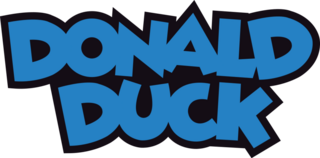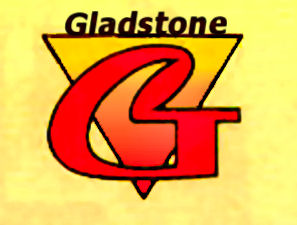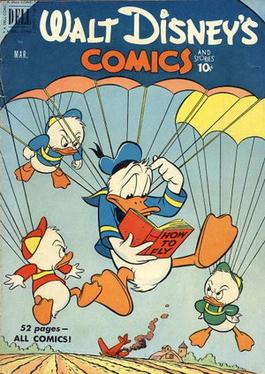
Carl Barks was an American cartoonist, author, and painter. He is best known for his work in Disney comic books, as the writer and artist of the first Donald Duck stories and as the creator of Scrooge McDuck. He worked anonymously until late in his career; fans dubbed him The Duck Man and The Good Duck Artist. In 1987, Barks was one of the three inaugural inductees of the Will Eisner Comic Book Hall of Fame.

Huey, Dewey, and Louie are triplet cartoon characters created by storyboard artist (screenwriter) Carl Barks for The Walt Disney Company from an idea proposed by cartoonist Al Taliaferro. They are the nephews of Donald Duck and the grand-nephews of Scrooge McDuck. Like their maternal uncles, the brothers are anthropomorphic white ducks with yellow-orange bills and feet. The boys are sometimes distinguished by the color of their shirts and baseball caps. They appeared in many Donald Duck animated shorts, as well as in the television show DuckTales and its reboot, but the comics remain their primary medium.

Professor Ludwig Von Drake is a cartoon character created in 1961 by The Walt Disney Company. He is the paternal uncle of Donald Duck. He was first introduced as the presenter in the cartoon An Adventure in Color, part of the first episode of Walt Disney's Wonderful World of Color on NBC. According to the episode The Hunting Instinct of that series he and Donald Duck's father are brothers. He is described as a scientist, lecturer, psychologist, and world traveler. The character displayed his "expert" knowledge on a variety of subjects in eighteen episodes of the classic anthology series, as well as on a number of Disneyland Records.

Scrooge McDuck is a cartoon character created in 1947 for The Walt Disney Company by Carl Barks. Appearing in Disney comics, Scrooge is a Scottish-born American anthropomorphic Pekin duck. Like his nephew, Donald Duck, he has a yellow-orange bill, legs, and feet. He typically wears a red or blue frock coat, top hat, pince-nez glasses, and spats varying in color. He is portrayed in animation as speaking with a Scottish accent. Originally intended to be used only once, Scrooge became one of the most popular characters in the Disney comics world, as well as Barks' signature work. Scrooge is an extremely rich duck who lives in the fictional city of Duckburg in the fictional U.S. state of Calisota, whose claimed location is in real-world California, United States.

The Donald Duck universe is a fictional shared universe which is the setting of stories involving Disney cartoon character Donald Duck, as well as Daisy Duck, Huey, Dewey, and Louie, Scrooge McDuck, and many other characters. Life in the Donald Duck universe centers on the city of Duckburg and is a part of the larger Mickey Mouse universe. In addition to the original comic book stories by Carl Barks, the Duckburg cast was featured in Little Golden Books, television series such as DuckTales (1987–1991), Darkwing Duck (1991–1992), and the DuckTales reboot (2017–2021), and video games such as DuckTales (1989), QuackShot (1991), Goin' Quackers (2000), and DuckTales: Remastered (2013).

The Duck family is a fictional family of cartoon ducks related to Disney character Donald Duck. The family is also related to the Coot, Goose, and Gander families, as well as the Scottish Clan McDuck. Besides Donald, the best-known members of the Duck family are Huey, Dewey, and Louie, Donald's triplet nephews.

The Junior Woodchucks of the World is a fictional scouting organization appearing in Disney comics and the DuckTales animated television franchise, most notably in adventures featuring Disney characters Huey, Dewey, and Louie as members.

Uncle Scrooge is a Disney comic book series starring Scrooge McDuck, his nephew Donald Duck, and grandnephews Huey, Dewey, and Louie, and revolving around their adventures in Duckburg and around the world. It was first published in Four Color Comics #386, as a spin-off of the popular Donald Duck series and is still presently ongoing. It has been produced under the aegis of several different publishers, including Western Publishing, Gladstone Publishing, Disney Comics, Gemstone Publishing, Boom! Studios, and IDW Publishing, and has undergone several hiatuses of varying length. Despite this, it has maintained the same numbering scheme throughout its six decade history, with only IDW adding a secondary numbering that started at #1.

Gladstone Publishing was an American company that published Disney comics from 1986 to 1990 and from 1993 to 1998. The company had its origins as a subsidiary of Another Rainbow Publishing, a company formed by Bruce Hamilton and Russ Cochran to publish the Carl Barks Library and produce limited edition lithographs of Carl Barks oil paintings of the Disney ducks. The name references Gladstone Gander.

"Guardians of the Lost Library" is a 1993 comic book story made by Don Rosa for The Walt Disney Company, mentioned by Comics Buyer's Guide as "possibly the greatest comic book story of all time". Although afraid at the time of its creation of cramming too many historical details into the story, Rosa himself mentions in Uncle Scrooge #383 that in fan mail he receives to this day, "Guardians of the Lost Library" to his own surprise is often referred to as "'the best Rosa story' or 'the best Duck story' or even 'the best comic book story' (?!!) that fans say they've ever read."

Walt Disney's Comics and Stories, sometimes abbreviated WDC&S, is an American anthology comic book series featuring characters from The Walt Disney Company's films and shorts, including Donald Duck, Scrooge McDuck, Mickey Mouse, Chip 'n Dale, Li'l Bad Wolf, Scamp, Bucky Bug, Grandma Duck, Brer Rabbit, Winnie the Pooh, and others. With more than 700 issues, Walt Disney's Comics & Stories is the longest-running Disney comic book in the United States, making it the flagship title, and is one of the best-selling comic books of all time.
Donald Duck, a cartoon character created by the Walt Disney Company, is today the star of dozens of comic-book and comic-strip stories published each month around the world. In many European countries, Donald is considered the lead character in Disney comics, more important and beloved than Mickey Mouse.

"Land Beneath the Ground!" is a Scrooge McDuck comic book story that appeared in 1956 in the comic book Uncle Scrooge, written by Carl Barks.
Mythos Island is a nine-part comic series made for Egmont. It is a crossover between the Mickey Mouse universe and the Duck universe. It is written by Pat and Carol McGreal and Per Erik Hedman and drawn by César Ferioli.

"A Little Something Special" is a 1997 Disney comics story created by Don Rosa to celebrate the 50th anniversary of Scrooge McDuck's first appearance in Carl Barks's "Christmas on Bear Mountain" in 1947.

Kalle Anka & C:o is a Swedish weekly Disney comics magazine, published by Egmont. The 52-page comic, launched in September 1948, is the overall best-selling Swedish comic magazine. In the early years, the comic printed translated stories from the United States, including Walt Disney's Comics and Stories, Four Color and other Dell Comics Disney titles. As Disney comics production waned in the United States in the 1960s, Kalle Anka began printing more European-produced content, from Scandinavia and Italy. Now, Kalle Anka & C:o and its Scandinavian sister editions Anders And & Co. (Denmark) and Donald Duck & Co (Norway) are identical, apart from the language.

"Gyro's First Invention" is a Gyro Gearloose story by Don Rosa that also features Donald Duck, Scrooge McDuck, and Huey, Dewey, and Louie. It is a 50th anniversary story for the character of Gyro Gearloose, as well as a sequel to A Christmas for Shacktown by Carl Barks, and tells of the creation of Gyro's Little Helper.

Paperinik, also known as PK (Italy), Superduck, Duck Avenger (US), is a comic book-costumed vigilante and Donald Duck's alter ego. The character was created in Italy by Elisa Penna, Guido Martina and Giovan Battista Carpi, and first appeared in the Italian comic series Topolino #706. The character appears in specific Paperinik stories, and he is never mentioned in the main Duckburg continuity.
The Carl Barks Library in Color is a series of 141 Disney comics albums reprinting most of the Duck comics written and/or drawn by Carl Barks. The set was published by Gladstone Comics from 1992 to 1998.

















